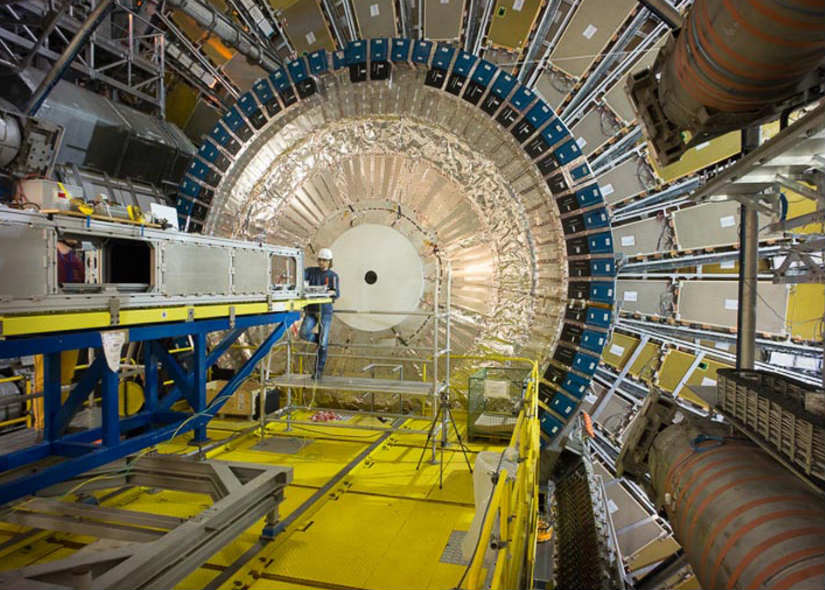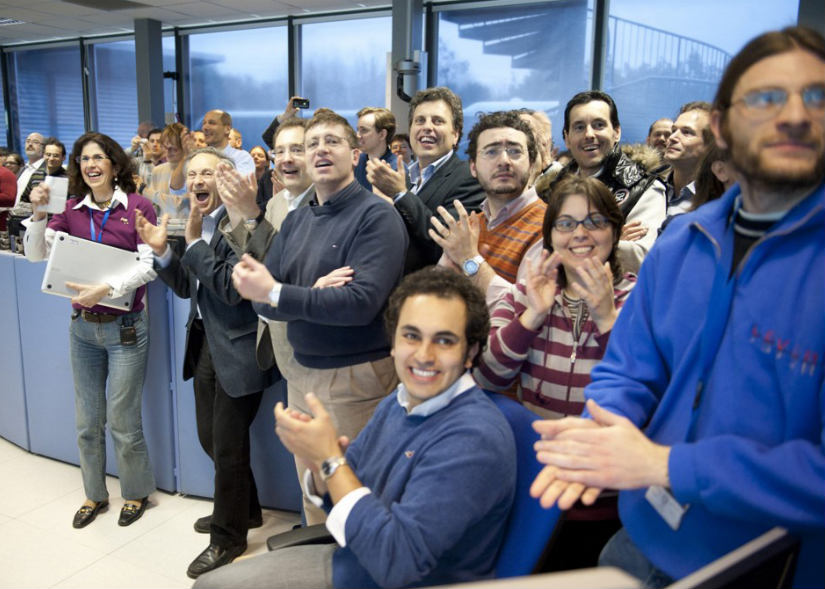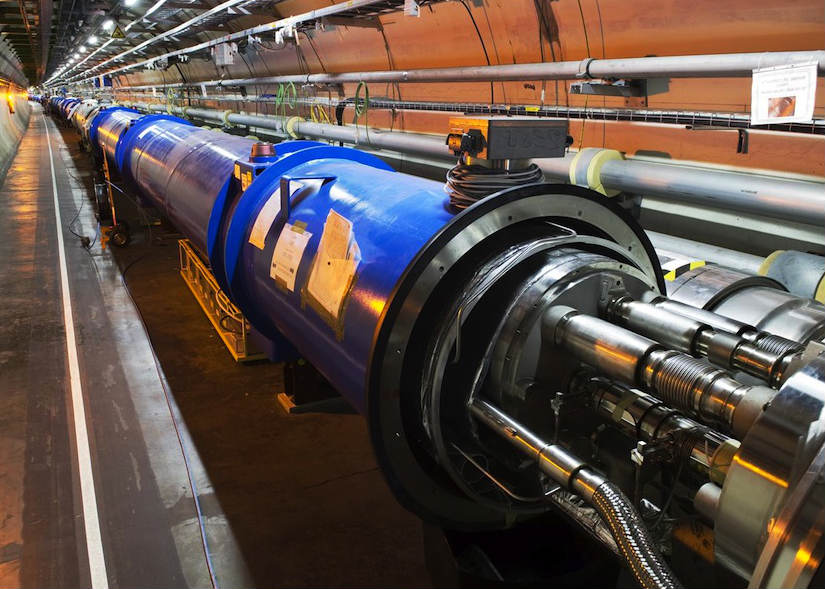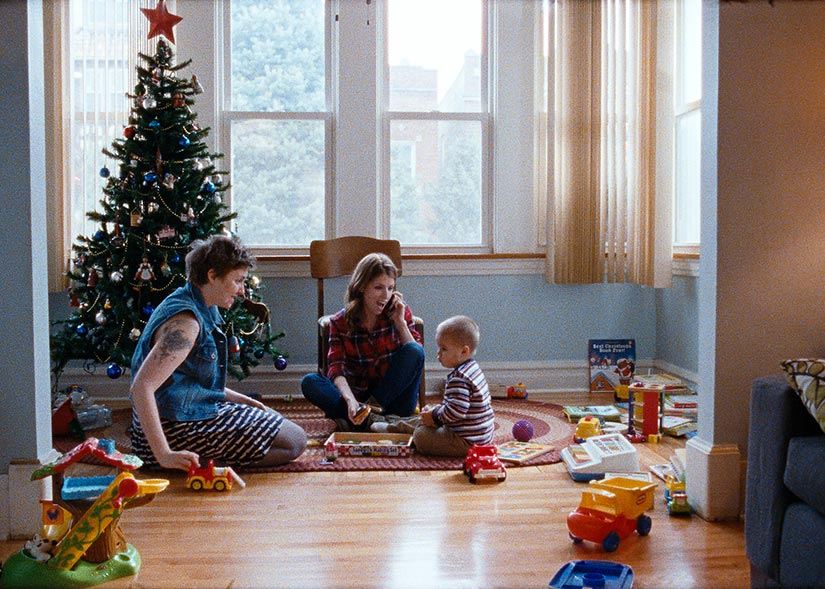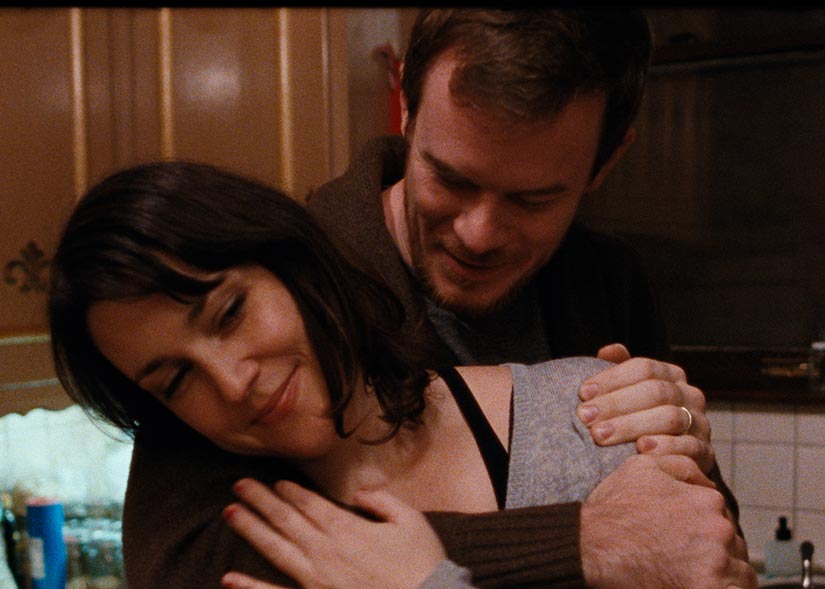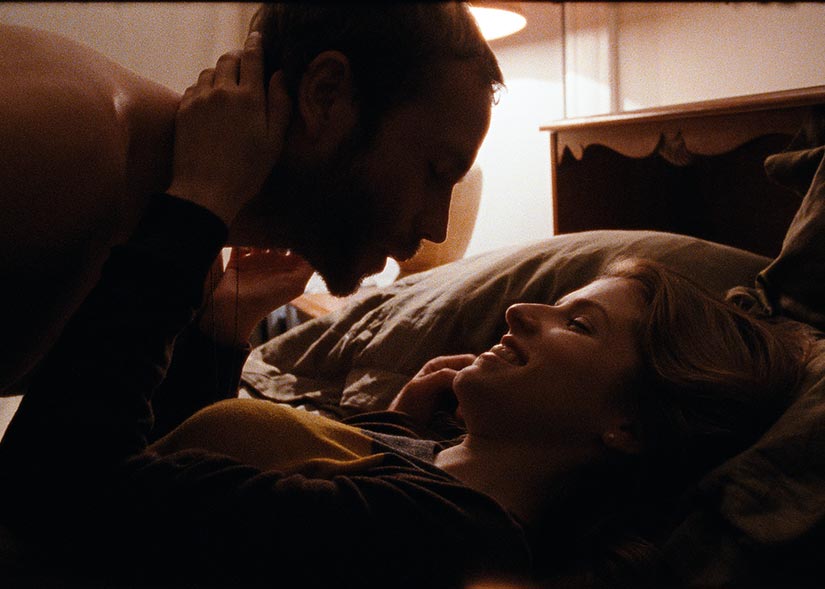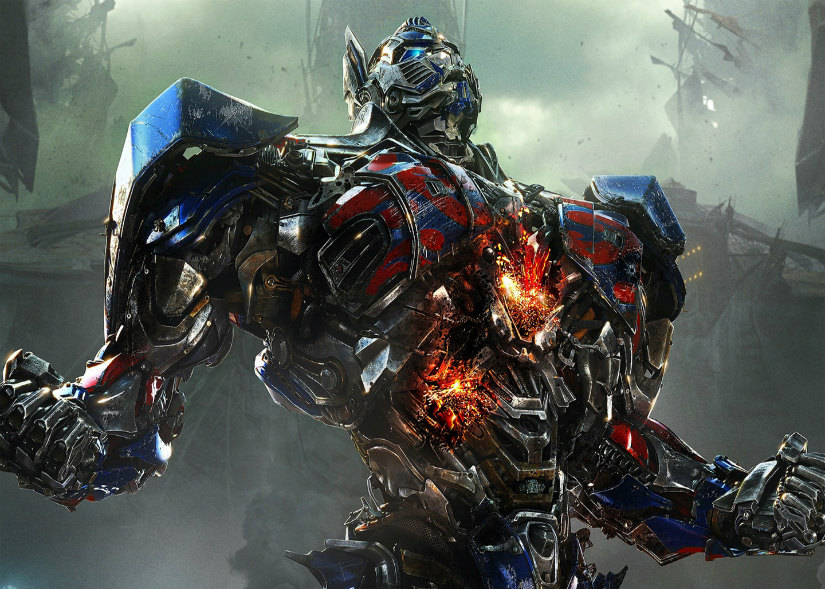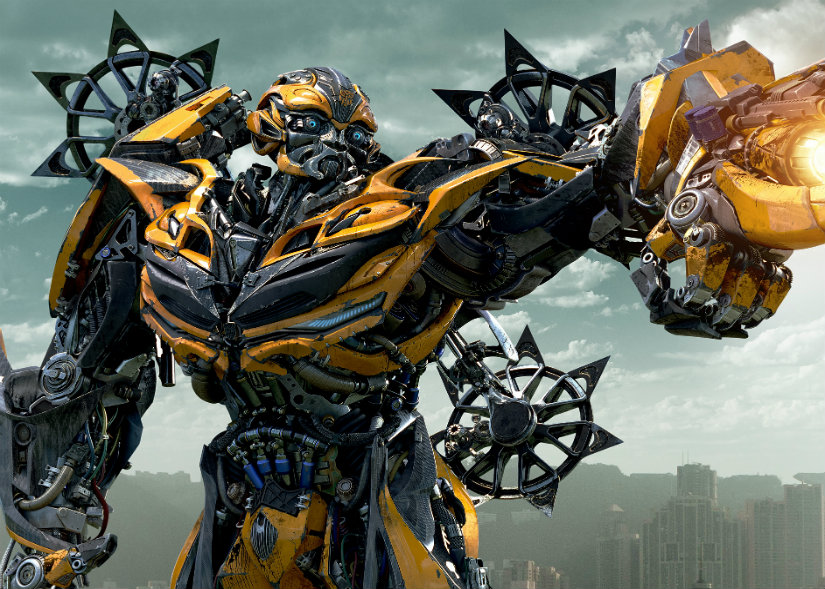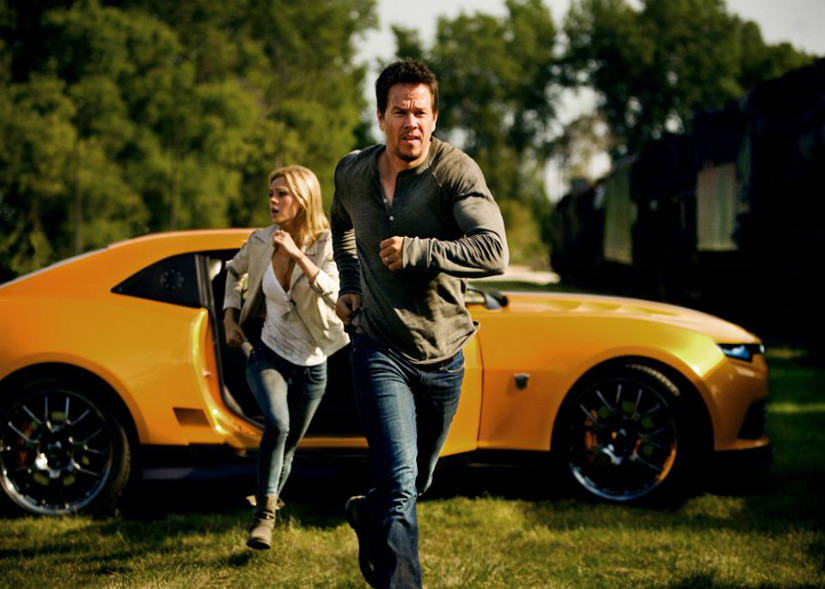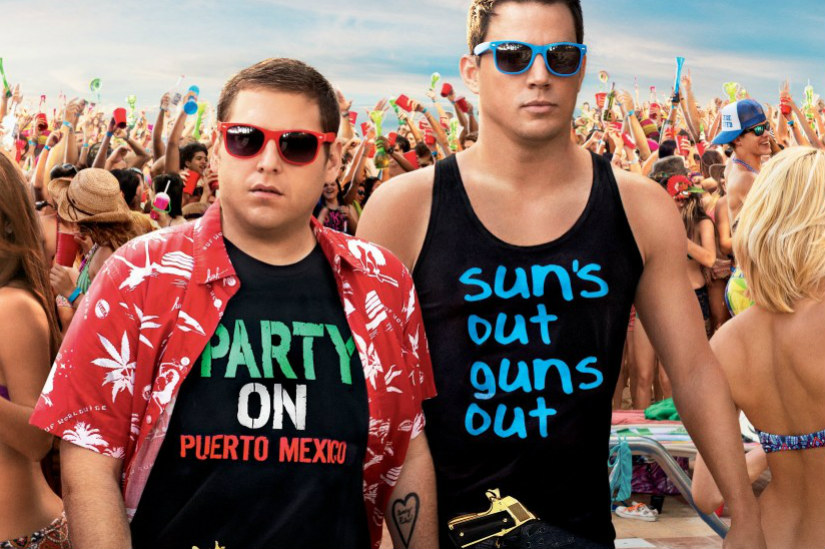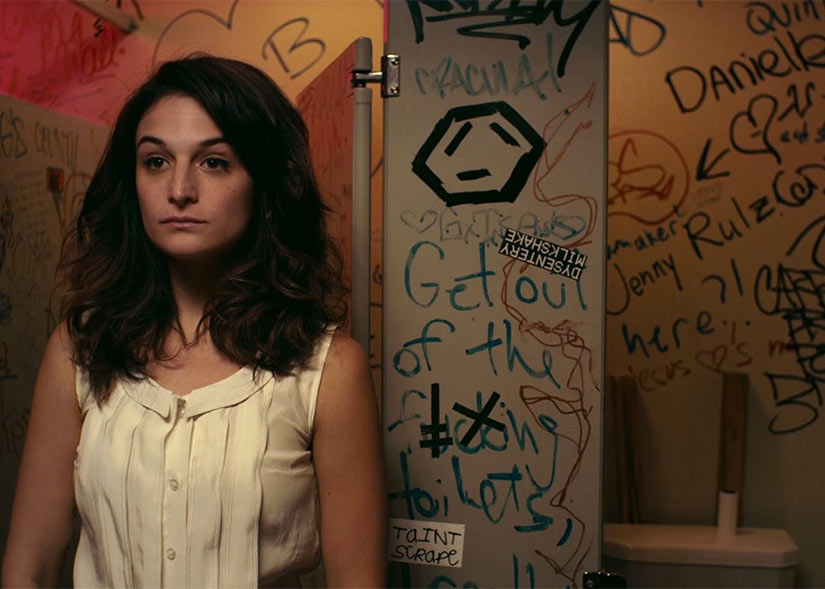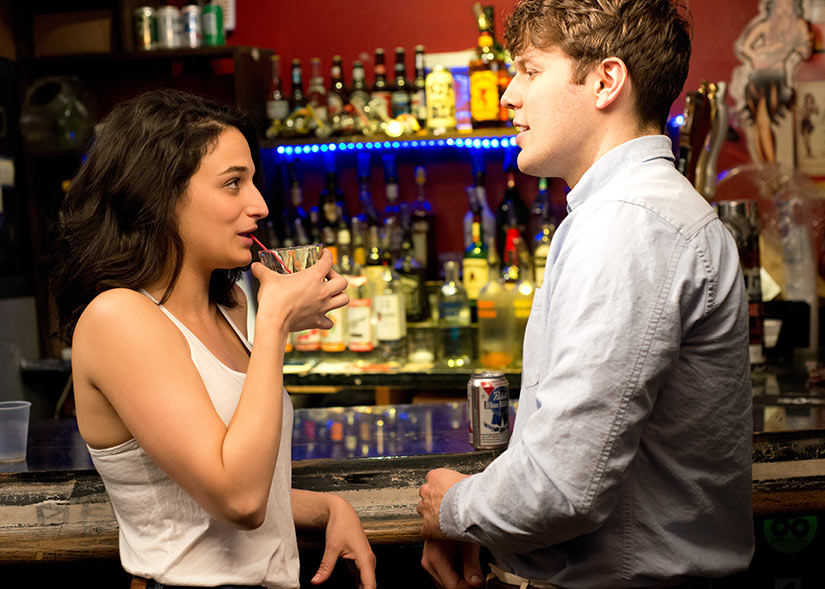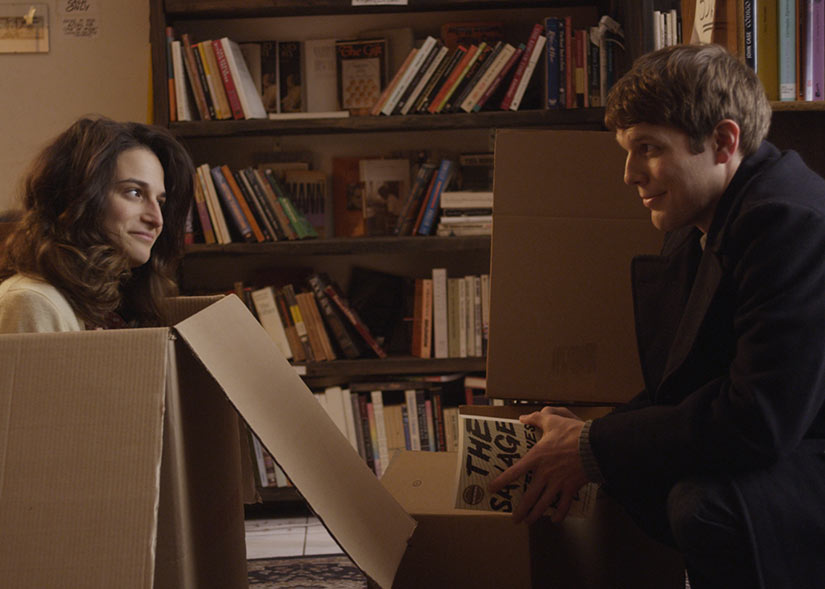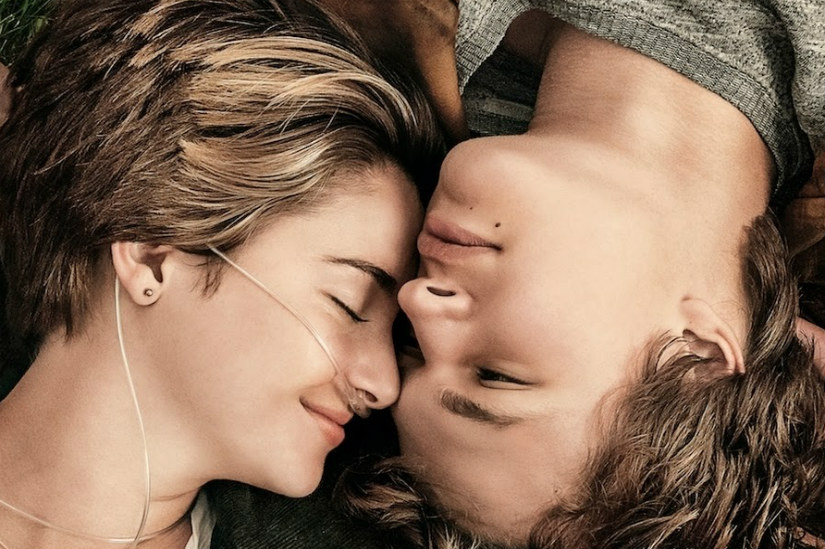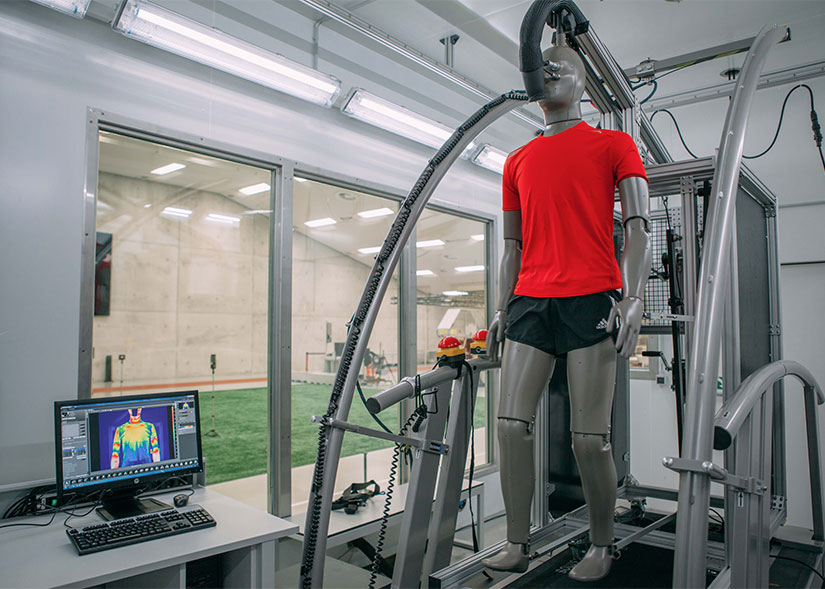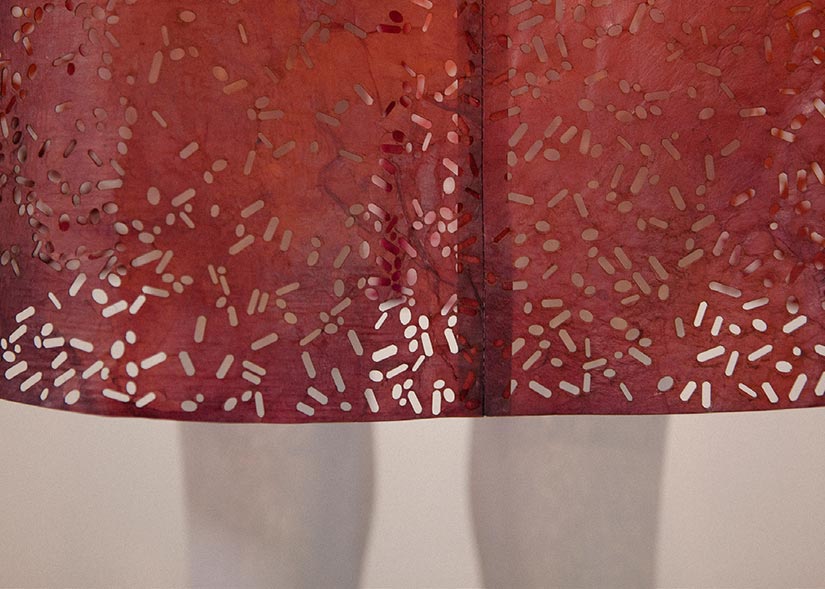[Review] Particle Fever
Science is a subject matter that most people, including me, would rather not wade around in. The insane creations and laws of the world all seem to take their toll on the feeble minds of the average person. However, this fails to stop interest in major inventions or discoveries that have a positive economic impact for all. We may not all express interest in science, but its omnipresence is undeniable.
As far as the science field goes, there appears to have been one theory in particular that has left scientists, churchgoers, and educators scratching their heads for years: how did the earth begin? Well, I guess most churchgoers will yell at you how it ACTUALLY started without even hearing other arguments, but Particle Fever would offer more to argue against it.
[youtube id="Rikc7foqvRI"]
Particle Fever
Director: Mark Levinson
Rating: NR
Release Date: July 1st iTunes VOD, July 15 all other VOD platforms
Particle Fever follows the likes of six different physicists from 2007 all the way up to 2012 as they work together on the Large Hadron Collider at CERN, or better known as the European Organization for Nuclear Research. For those who can remember, this is the large machine that would reproduce what happened at the “Big Bang” that frequented the news for years. This was the largest and most expensive experiment in the history of the planet. It brought together over 10,000 scientists from over 100 countries, some even rivalries politically. By the end of the over ten year old experiment, these brilliant scientists hoped to be able to recreate the events of the Big Bang and find the Higgs boson particle, which would essentially explain how all matter was created.
It wasn’t all fun and games for these hard-working scientists though. While their involvement may have been the honor of their lives, the upkeep with this 17 mile wide creation wasn’t always easy. Working 16 hours a day for years on end, it is actually surprising how they managed to keep their spirits up for so long. However, so much energy was encapsulated by each in Levinson’s directing, and a viewer couldn’t help but feel just as excited for this experiment to run for its first time as the people who were in charge of it.
The subject matter of the film is a little dense, yes, but when watching the film, it doesn’t take precedence of all it has to offer. Testimonies and beautifully displayed graphics from all of the scientists selected for the film clear up most confusion that viewers may have. However, this isn’t to say that one will become a master physicist after watching the movie. What I really liked about this film was its ability to make me feel like I was with these scientists over the years experiencing the same trials and errors that they all did. It’s execution was done with such energy, and I think this is what kept me going throughout.
Now, if you personally asked me how I felt about the film, I would praise it with high regard. Unfortunately, though, the density of the subject matter and it’s continual discussion throughout the film may come across as a drag to those who are not usually fascinated by the world of science. I felt at some moments of the film that it was kind of redundant, but at the same time the redundancy was necessary to make sure viewers could keep up with each stage of their large experiment. As far as documentaries go, it was most definitely one of the best ones I have ever viewed, and I hope that most will put their scientific indifferences aside in order to enjoy this optimistic work.
Mark Levinson has a few great credits to his name, but after watching this documentary, I can’t help but hope that this is something he will continue to pursue. I feel as if the explanation of science and its theories is something that could bore most, but there were very few moments where I wasn’t anxious to find out what was going to happen next. Particle Fever is a piece of work that defines a scientific generation. If there is any interest in defying religious values, definitely check out Particle Fever as soon as possible.
[Review] Happy Christmas
Mumblecore has been growing into prominence within the independent film scene in recent years thanks to a few notable filmmakers like Lena Dunham (Girls, Tiny Furniture), Jay and Mark Duplass (Jeff, Who Lives at Home), and Joe Swanberg (Drinking Buddies). It took awhile, but I eventually warmed up to the genre's focus on naturalism, whether it's due to the actors' improvised performances, the use of a loose outline rather than a traditional screenplay, or the presence of an actual film camera (16mm specifically for Happy Christmas) rather than a digital one. The aesthetic behind independent, low-budget films is the backbone of the genre, and it's surprising that it took me so long to better appreciate it.
Or perhaps it's because I was waiting for the right filmmaker, and that's where Swanberg comes in. Partially because of his talents as a filmmaker, partially because of the stories he wants to tell, or partially because he is now a Chicagoan, there's something special about Swanberg's films that I'm drawn to. Read on as I find the words to help express why I felt so strongly about Happy Christmas.
[youtube id="7VaaYbraOrQ"]
Happy Christmas
Director: Joe Swanberg
Rating: PG-13
Release Date: June 23, 2014 (VOD)
Following a breakup, 20-something Jenny (Anna Kendrick) decides to move to Chicago and live with her older brother, Jeff (Swanberg), his wife Kelly (Melanie Lynskey), and their newborn son, Jude (Swanberg's actual son). As Jenny attempts to rediscover her identity, whether it's simply by hanging out with her friend Carson (Dunham) or exploring a new relationship with the family babysitter, Kevin (Mark Webber), her presence has an undeniable impact on Jeff and Kelly's lives... for better or for worse.
However, whereas most films may take the easy "self-discovery/identity" route with a typical narrative structure with their protagonists, Happy Christmas defers from what's become expected and standard in a narrative film. Without spoiling the film, I'd say the focus isn't directly on Jenny and her story (despite her being the main character), but how her presence shapes and develops Kelly's character. Kelly's story is much more intriguing than Jenny's as she attempts to re-balance her artistic leanings with her newfound responsibilities as a new mother, but it's through Jenny's scope that we're able to see how those two seemingly opposite spectrums can work together.
Happy Christmas shares a universal appeal, but has an extra special element that Chicagoans can appreciate a little more. As a 20-something myself with friends starting their own families, I can understand and empathize (a bit) with finding the compromise between work and family, which is something I think most Chicagoans feel given the "grind" and "hustle" the city offer, combined with the "Midwestern family values" we inherently share. Given the indie, low-budget nature of the film, Happy Christmas also feels like a passion project made with friends, to the point where I was actually shocked to see a casual acquaintance of mine as an extra in the film (Erin, you really do deserve an award for being Best Stander).
It's because of Swanberg's ability to create a small film with a small focus with a 16mm camera that further accentuates that direction that helps make Happy Christmas work so well. The actors individually have their own levels of success both in and out of the film community, most notably Kendrick's growing star in Hollywood and Dunham's large success with Girls, yet they're still able to embody these roles and characters that allow you to truly believe their characters and make you think, "Yeah... I could see myself grabbing a beer with them." Granted, this is what an actor's job is to do, but when was the last time you watched a Tom Cruise or Brad Pitt film and realistically envisioned yourself holding an actual, insightful conversation with them? Again, this comes down to Swanberg's whole vision for his projects that makes audiences truly connect with his characters. And it's because of this singular ability that I personally am so drawn to his films.
The big question, then, is how general audiences will receive Happy Christmas. As somebody who finds joy in analyzing and critiquing films, there's so much going on with Happy Christmas, both narratively and technically/cinematically, that I loved just focusing on and breaking apart. However, for somebody who's looking for a weekend rental or an impulse purchase, you might be expecting something different. Yes, there are legitimately funny scenes in Happy Christmas, but you won't be slapping your knees and gasping for air. Instead, I hope anybody that watches Happy Christmas can appreciate the film for what it is: an honest look at familial relationships that can be both funny and depressing... sometimes even at the same time.
[Review] Transformers: Age of Extinction
The Transformers films and I have a sordid past. While I'm not a big fan of the property (my only knowledge of the series comes from a slim memory of the Beast Wars/Beast Machines cartoons on Fox Kids), the first Transformers was my initial break into nerd films and their hype machines. It was the first film I bought a poster for, the first film where I had watched every trailer, and the first film where I anticipated a sequel. While others walked away confused, I loved the heck out of it. But two dubious sequels later, the Transformers name doesn't garner as much good will as it used to.
But when the first trailer for Transformers: Age of Extinction released, I let myself get wrapped up in the hype machine again. Regardless of their overall quality, the Transformers series is always a visual feast. I knew going in that even if I didn't like what anyone was saying or doing, it was going to look super rad.
Thankfully, if all you're looking for is slick looking action and shiny things without caring whether or not Transformers has things like "plot," "pacing," or "characters" than you're going to have a great time. Just be willing to sit for three hours.
[youtube id="S30VkLn5a2o" autoplay="no"]
Transformers: Age of Extinction
Director: Michael Bay
Rating: PG-13
Release Date: June 27, 2014
Transformers: Age of Extinction takes place several years after the events of the third film, Dark of the Moon. Gone are the plucky Sam Witwicky and his family, and in their place we have a small town inventor from "Texas, USA (Yes, that's really the location)" Cade Yeager (Mark Wahlberg), his daughter whose name I forget (Nicola Peltz), and her boyfriend whose Irish but lives in Texas who also races cars for some reason (Jack Reynor). Because of the destruction in Chicago during the Autobots and Decepticons' last battle, the US government, headed by Attinger (Kelsey Grammer) has begun hunting down all the robots for their materials. When Cade stumbles upon Optimus, a larger and more befuddling plot is revealed. To go into further detail than that, I'd have to use the entire length of this review.
If it seems like I'm being overtly harsh on Trans4mers from the get go, that's because it hardly even cares about itself. I'll be blunt here. While not as bad as Transformers: Revenge of the Fallen, Age of Extinction is a shoddy mess of a final product. It's like Bay took criticisms of the first few films to heart and fixed some problems, but then decided to add a whole host of brand new issues. It's just haphazardly thrown together into a Frankenstein's monster of focus group decisions, corporate branding, cartoon fandom, and toy sales. To be fair, that's technically what the rest of the series is, but for some reason it's far more noticeable here. The tone is more cynical than before.
The "plot" is just several thousand locations thrown around aimlessly. It's chaotic and almost entirely random how we'll go from an Alien spaceship to Optimus Prime and Cade having a little chat about the struggles of parenting. The more interesting aspect of all of these locations, however, is how "Anti-American" the entire film feels. I'm not sure if it's intentional or not, but underneath the overt need to please its overseas Chinese audience, we have a wonderful film where America is the bad guy. Taking the same eschewed American Dream mentality from Bay's Pain & Gain, Kelsey Grammer's Attinger (and his "I will protect America" rants) makes America the bad guy. When you contrast the final shot of Dark of the Moon with the American flag billowing proudly in the background to Attinger's speech about creating American products to save American lives in the middle of a Chinese factory, it's almost as if Bay is giving a little wink to let you know he's in on the joke.
But that'd be giving Age of Extinction too much credit. One of the biggest issues audiences have had with the last few films are the humans. That's exactly the same issue here. In fact, Extinction seems to think throwing more humans in there will fix the problem. Mark Wahlberg does have the charisma of a leading man, but he's totally out of place as a genius, yet super ripped inventor. Nicola Peltz is there to be window dressing as her scantily clad self slow motion runs from one dangerous situation to another (which gets all the creepier when the film makes a point to emphasize she's a minor), Jack Reynor comes off as a total jerk when he's supposed to be the "cocky guy" type, Stanley Tucci tries to make it work but comes across as goofy, and Kelsey Grammer has played better villains. With Grammer, we got more Sideshow Mel than Sideshow Bob. Okay so the humans are bad, but what about the Transformers? They have to be cool, right? Robot dinosaurs are cool, huh?
The designs of the Transformers themselves are much slicker than in series past, and go very well with the film's darker tone. And although he's spitting mostly nonsense, Peter Cullen brings a heft to Optimus Prime that no one else can. In fact, Cullen's voice work is so great, I kind of want another Transformers film just to hear him scream "I'll kill you!" again. The weird standout, however, is John Goodman as the newest Autobot, Hound. Replacing the human comic relief character, Hound is a one-liner spewing machine. This would've been fine had any of those one liners actually worked. Every scene he's in he says about three thousand words, and by hour three of this whole debacle I was hoping he'd bite the bullet. Oh, that's right. Transformers: Age of Extinction is a bloated two hours and 45 minutes.
Remember how I mentioned Age of Extinction seemed like a cynical sequel? That also goes with the technical stuff. Bay is a maestro of explosions and I was expecting some good looking ones here, but there's an odd hiccup with a lot of them. It might've been the switch to IMAX cameras, but there are a few golden spots that undergo a dip in quality when action is blurred (as Bay didn't shoot full scenes with IMAX and instead focused on a few key shots). And as good as the action might look, it's very hard to stay invested when the last 45 minutes are a nonstop action sequence featuring characters you don't care about. When you think the film's over (and it even gives you a suitable ending), it just keeps on going. Dinobots and proper film editing be damned, Age of Extinction did not need to be this long.
At the end of the day, Transformers: Age of Extinction is yet another Transformers film we'll all see. And it should be the last. For fans, they'll enjoy the darker tone, will accept that an alien bounty hunter who hates Earth is also a Lamborghini, and will get a kick out of the dinosaur robots when the rest of us want to go home already.
Transformers: Age of Extinction will truly test your mettle. Ask yourself a few questions. How valuable is your time? How important is that ten or fifteen dollars you'd spend on a ticket? Are cool cars enough for you?
It truly is the "age of extinction" for the Transformers series. Let's bury it once and for all.
[Review] I Am I
Films that use memory loss as the central conflict can enter into some very interesting territories, like in Eternal Sunshine of the Spotless Mind, Memento, and Shutter Island (to name a few). The struggle, however, is to craft a cohesive puzzle/mystery that holds up in spite of such a character deterrent that disallows real character development. To find a way around this while still keeping true to the character and their respective ailment. In I Am I, writer/director Jocelyn Towne attempts to craft a touching tale about a daughter making selfish decisions to get to know her absentee father despite his unfortunate mental condition, but instead creates a film that leaves too many loose ends by the time the credits roll.
[youtube id="OVC2XIW22RI"]
I Am I
Director: Jocelyn Towne
Rating: N/A
Release Date: June 13, 2014
At her mother's funeral, Rachael (Towne) runs into her father, Gene (Kevin Tighe) who left the family when Rachael was young. She soon discovers that Gene is suffering from Korsakov's Syndrome, a form of amnesia that prevents Gene from remembering anything past the age of 34 and was placed in an assisted living facility by her mother a year prior. In an attempt to get to know the father she never knew, Rachael begins to visit Gene frequently; unfortunately, he confuses her for his ex-wife and Rachael's mother, Sarah. She soon begins to embrace his delusions by dressing in her mother's old clothes and playing the role of her deceased mother.
Right then and there, I Am I throws off red flags. Thankfully, the delusions don't go far enough to even broach the topic of incest, but does it ever feel like the line is going to be crossed. And this is due to Rachael's selfishness. I Am I's script justifies it via Gene's handler, Jonathan (Jason Ritter), allowing the visits to continue "as long as Gene is happy," and Gene's happiness is, in fact, elevated during his time with Rachael/Sarah. However, at what cost? The price of his happiness is ultimately teased towards the end of the film, but it doesn't justify the means in which the script took to get there.
Arguably, I Am I is a character piece between a daughter wanting to meet the father she never knew growing up. However, the means in which she does this comes at the sake and well-being of the very person she grows to love and care for. It's a character flaw I could never look past that the film doesn't punish her for. There's a climax in the film where you expect some type of true development for Rachael's character to experience, but the moment is lost thanks to the film's shoddy ending.
The presence of the supporting characters feels like an afterthought. There are notions of a romantic subplot between Jonathan and Rachael that inevitably just end with no real development (or elaboration, for that matter). Rachael's step-brother, Seth (Simon Helberg), is used for a very minor plot device. Rachael's much older husband, Keith (James Morrison), is used to drive the emotional theme of Rachael's longing for an older male figure in her life. Really, they're just auxiliary characters meant to beef up the film's cast, but aren't used that much.
I Am I had an interesting premise: a daughter pretending to be her mother to get to know her amnesiac father. Unfortunately, the film feels emotionally bland and uninteresting led by a manipulative and selfish lead character. This is one film you wouldn't mind developing amnesia for.
[Review] 22 Jump Street
21 Jump Street was one of my favorite films of 2012. Smart, quirky, hilarious, and proved that remakes could work if they're done in a loving way. When 22 Jump Street was announced, I was worried. Could lightning strike twice? Sequels to great comedies are usually terrible and unwarranted, so why would 22 Jump Street be any different? Directors Phil Lord and Chris Miller must have realized our concerns too since 22 Jump Street takes all of those criticisms and says "Who cares? We're doing this anyway and you're going to love it."
22 Jump Street is a ridiculously funny film that uses self-awareness to poke holes in the fact that every successful Hollywood film has to get a sequel.
[youtube id="qP755JkDxyM" autoplay="no"]
22 Jump Street
Director: Phil Lord and Christopher Miller
Rated: R
Release Date: June 13, 2014
22 Jump Street (which now takes place at a Vietnamese church across the street), has officers Schmidt (Jonah Hill) and Jenko (Channing Tatum) going to college on a mission to infiltrate the school, get close to the students, and to discover the suppliers of a new popular drug called “WHYPHY.” If the synopsis makes the film sound exactly like the first, it's because it is! In a quirky turn of events, multiple references are made to the fact that this film is exactly like the first. As a shout out to sequels in the same predicament, Jump Street directly refers to the movie studio (as "The Police Department") when Schmidt and Jenko are told to do things in the exact same fashion because it was successful the first time. Unfortunately, while this may be the film's most hilarious gag, it's also its biggest problem.
While referencing its blatant copying of the first film's plot may be smart, it doesn't change the fact that we're watching the same movie. It's a like a mask attempting to cover the film's more noticeable flaws. When you want to point out why a scene or plot point might be funky, the film always tries to explain it away with "it was done that exact same way the first time." In fact, there are no surprises in this film. You guess every twist, Schmidt and Jenko's arcs are the same (they both separate as they fall into different social crowds, except this time it falls into place the way you expected it to in the first film), and with the surprise gone the film's greater moments are a bit less effective. But in the same breath, as much as I can complain about the film's similarity to the first, it's also just as funny. It uses this similarity to further delve into the bromance between Schmidt and Jenko and just have a good time.
22 Jump Street has fantastic jokes. From cartoonishly out of place things like Benny Hill references, a school named "The Plainview Red Herrings," to multiple sets of twins, each joke is delivered with ease and the improvisation is most definitely on point. Hill and Tatum are absolutely wonderful together as they've perfected the comedic rhythm they had in the first. Channing Tatum once again is easily one of the stand outs as much of his jokes had to have come from the man himself. It's still so great to see Tatum deconstruct his Hollywood image as the buff everyman into a lovable goof. He also brings one of the film's biggest laughs when he finally realizes the significance of one of the plot points.
If you love laughing at Jonah Hill, but not necessarily with, most of his jokes are self degrading in nature. He's more of a straight man to Tatum's goof this time around, but he still manages to provide many laughs with his physicality. The rest of the returning cast is in fine form as well. Nick Offerman does a lot with what little screen time he gets, Rob Riggle does great impressions, and newcomer (and Workaholics alum) Jillian Bell has a fantastic sense of deadpan delivery. But Ice Cube, with a welcome extended role as Captain Dickson, has to be the MVP of the whole thing. Every one of his lines are strong, and not a single moment with him is wasted.
Early into the film, you realize 22 Jump Street is going for over the top in the best way. It's ludicrous, but restrains that stupidity in a way that just makes the film one big party. It's not trying very hard to be a compelling film, but that's sort of the point. You're not supposed to sit there and poke at flaws (like I just did), you're supposed to look at the ceiling and sort of thrust through it. And besides, it's hard not to have a good time when everything is just fun to watch. I was laughing in large amounts, you'll probably laugh in large amounts, and then you'll go home smiling like an idiot. Like a good party with friends you've known for awhile. You'll know their stories and jokes by now, but that doesn't necessarily mean you'll be bored to tears.
22 Jump Street is a celebration of its existence. A well earned victory lap that openly mocks the fact that it was created in the first place. It throws caution into the wind, laughs at the fact it put in very little effort into the story, and even takes the bromance found in most buddy cop comedies to the next logical level. Lightning has definitely struck twice.
I didn't want this party to end, and I can't wait for Jump Street Generations.
[Review] Obvious Child
For whatever stupid reason, there was this general stigma in mainstream entertainment that women weren't funny. Obviously, this was just some stupid misconception as iconic comediennes like Roseanne, Ellen, Lucille Ball, Carol Burnett, and other female luminaries were just as funny (if not more so!) than their male counterparts. Nevertheless, this stigma floated around for the longest time, and it wasn't until fairly recently that people realized that women are, in fact, funny. Thanks to shows and films like 30 Rock, Parks and Recreation, and Bridesmaids, we have more contemporary examples that the ladies can bring in the laughs and the money the same way the guys have been.
I say all of this as a preface for my review of Obvious Child because I feel that Gillian Robespierre's film is just the type of indie comedy we need more of that transcends who's in the lead, male or female. Obviously, the success of Obvious Child is well-balanced thanks to Jenny Slate's performance, but I'll get more into that later. Simply put: If you find a theater playing Obvious Child, I highly recommend checking it out. Now let me attempt to explain why.
[youtube id="r2GN3wdfqbA"]
Obvious Child
Director: Gillian Robespierre
Rating: PG-13
Release Date: June 6, 2014
Donna Stern (Slate) is an aspiring stand-up comic who is not afraid to share a bit too much of her life on stage in the name of humor. Unfortunately, this causes her boyfriend to break up with her just weeks before Valentine's Day. To make matters worse, she soon gets laid off from her book store job due to the store's closing. One night, she forms a connection with a man at a bar, Max (Jake Lacy), who is Donna's complete opposite. Their night of revelry ends with Donna becoming pregnant, forcing her to make a life-affirming decision that she may or may not be ready to make.
In recent memory, Juno stands out as the indie darling that took something like unwanted pregnancies and made it the focal point of a whimsical, quirky dramedy. Whether you're a fan of Juno or not, it represented a modern film that allowed us to take a look at a somewhat social taboo such as unwanted pregnancies and made us truly ponder the topic without getting too political or preachy. However, whereas Juno hid behind irreverent non-sequiturs and pop-culture references out the wazoo, Obvious Child forms a more realistic and human connection between its subject matter and its audience.
As I mentioned previously, this is thanks to the combination of writer/director Robespierre's vision and Slate's performance. Slate evokes an everywoman charm that I think anybody can relate to. Obviously, I'm not a woman, but I feel that some of the conversations and jokes Donna has throughout the film is similar to the types of things my friends and I talk about, no matter how awful or disgusting they are. In a way, Obvious Child shares the same ethos that Judd Apatow films do, but better grounded and more human.
The downside to this connection, unfortunately, is that the characters both surrounding and opposite the lead, more specifically Lacy's Max, feels one-dimensional and not a fully-realized character, but someone who's only meant to serve as a foil/opposite to Slate's Donna. Here we have the rambunctious, wild, emotionally-broken Donna set opposite from the well-put together, straight card Max. It's a character trope that exists in almost all comedies, and it's one that I wish the genre will move away from.
Regardless, I think Obvious Child is one of the better films I've seen this year. Jenny Slate's performance in the film shows so much promise from both a comedic and dramatic perspective that I can imagine (and hope!) she'll eventually find herself in the spotlight of successful and talented comediennes on the same vein as the aforementioned actresses in my introduction. Writer/director Gillian Robespierre, meanwhile, has a knack for capturing not only the human side of comedy, but the comedic side of humanity, and I can't wait to see what she does next.
[Review] The Fault in Our Stars
Cancer sucks. It's such an invasive, destructive disease that ruins lives. There's never much you can say to those who suffer from it, either. Our human need to emphathize will lead most of us to say "Oh, you have cancer? My __ died from that" knowing full well that we'll never truly understand the suffering for ourselves. We're just left grasping at intangible straws that crumble the moment we reach for them. I just lost a grandmother to it two months ago, and had seen both my father and mother struggle with their own bouts a few years apart. While I've never had to face the beast myself, with how prevalent it is in my family, I'm sure my own fight is going to take place some time from now.
But where does The Fault in Our Stars lie in all of this? It's for folks like myself in the thick of it all, yet outside of it enough to necessitate an inside point of view. The Fault in Our Stars is not the romance it's advertised as. It's a poignant drama dissecting the debilitating nature of disease and how to surpass it.
[youtube id="9ItBvH5J6ss"]
The Fault in Our Stars
Director: Josh Boone
Release Date: June 6th, 2014
Rated: PG-13
Based off the popular Young Adult novel of the same name, The Fault in Our Stars follows Hazel Grace (Shailene Woodley), a young girl suffering from thyroid cancer who now has to use an oxygen tank to breathe since it spread to her lungs. At a cancer support group, Hazel runs into Gus (Ansel Elgort), a boy who once had osteosarcoma before removing it with a leg amputation. As Hazel has lost her sense of self and pretty much given up, Gus is the new spark of life that urges her forward. As the two grow closer, unfortunate events take place that test the boundaries of their friendship.
Disease dramas are a dime a dozen. When done well, you'll have a strong focus on the protagonist rather than the disease (Terms of Endearment, 50/50, The Big C), and when done badly, you forget you should care as the focus is strained between the folks surrounding the main character (A Walk to Remember, 65% of the Lifetime Movie Network). Basically, in order to fully appreciate how much diseases suck, we need to understand and emphathize with the main character and avoid putting them on some unreachable pedestal. Without that basic framework, we're left wanting as the film wants us to shed undeserved tears. Because in the end, it's not about the disease, it's about the the individual. And that's where The Fault in Our Stars soars. More so than any teen romance, disease drama, or teen film in recent memory, Fault is lazer focused on Hazel. The point of view is built so strongly, we're feeling what she's feeling. And that also means Gus isn't your everyday "Guy changes woman's life" found in most romances now.
But it's not exactly all perfect either. While the film absolutely nails creating two individuals completely separated from their disease (as in, it's not the only way to identify them), it falls into several pitfalls of the romance genre. There is plenty of overtly corny dialogue as it's almost too linguistically distinguished to come out of a kid's mouth. While Hazel sounds like she's a teenager, much of Gus's dialogue sounds like a thirty year old man looking back on life. While you can argue that disease would mature an individual beyond their years, it often took me out of the moment to hear Gus say something along the lines of "It would be a privilege to have my heart broken by you" as I found my eyes roll more than once. But in the same breath, most of that dialogue comes from the source material and, while I'm not the hugest fan of how cheesy it sounded, fans of the text are most likely going to love hearing it.
The film also has a huge pace problem. I haven't read the source material myself, so I can't fully assess what was removed or kept for the film, but there is a huge amount of time spent on non-sequiturs, or moments that aren't particularly necessary for the narrative to move forward. Although one of the detours features a brilliant cameo/minor role from Willem Dafoe, most of them don't attribute to character or world building. Fault could've really used the brevity too as when it does focus on character, it really works. As stated earlier, The Fault in Our Stars develops a hearty central relationship worth investing in. Their relationship is sadly realistic as it's bred more out of necessity and panic that their lives could end at any minute. Yet, it's incredibly touching to find them fighting back against the current. Also helps that Shailene Woodley and Ansel Elgort are perfect together. Every scene has the right amount of awkward. yet charming chemistry a relationship like this needs. I haven't seen Elgort in much before this, but I hope he gets to be in things far more often. He's the right leading man for these types of situations.
But the biggest praise for The Fault in Our Stars (which attributes for much of the final score) lies with its finale. A nice twist on my first expectations, and an ending that could've easily fit any other romantic film. Oddly, that's where Fault makes the most headway. When it reaches past the boundaries of the disease drama, and can easily mold to other films. These two kids are no longer just kids with diseases, they're kids stuck in a tragic love. Whether or not you completely buy into that love doesn't matter, either. Because while the major focus is romance, the hidden current in the narrative is fighting for survival, for hope.
The Fault in Our Stars is true to life in such a splendid way. Despite being constantly reminded of doom looming on the horizon, it's content to revel in the small pockets of serenity within a set number of days. And that's what my mother and father told me fighting disease is like. Rather than just survival, true victory lies within the gall to laugh in the face of death and live like you weren't struck with it in the first place.
[Review] The Next Black
The Next Black introduces us to the Brave New World of fashion, placing the garment industry in a futuristic context that most of us growing up with stores like H&M or Zara never thought would be possible. The documentary comes at the viewer in a minimalist, straight-forward and tsunami-like manner, similarly to the clothing industry itself, which holds promises of one day wearing the surface of computers- washable tech, soft tech, and silky tech - on our bodies.
The documentary opens up by explaining that textiles today still cover bodies and indicate social code. However, fusing fashion and technology introduces us to a drastic transformation in textiles- to a machine that alters the way we dress, or a factory disguised as a garment. While this idea seems too cyborg-like or OD science fiction for some, wearable tech is going to make its way to the market sooner or later, and scientists collaborating with designers are ready to tackle the breakthrough. While few interviewees are featured in this documentary, each is an expert in his or her field, and effectively hits viewers with numerous facts about the quickly transforming world of fashion.
[youtube id="VuPzdpudwhU"]
The Next Black
Director: Phil Marthinsen
Rating: N/A
Release Date: June 3, 2014 (VOD)
The New Black brings to the table the concept of smart clothing. In Germany, Adidas has figured out how to monitor athletes’ performance using real time, equipping their clothing with heart rate sensors and working on adding respiration sensors and other features. Elite sportswear is still in the “bacteria” stage, as is most wearable tech, and is focused on developing smaller, faster, and smarter platforms. The concept of bacteria is also introduced to the viewer in a more literal and concrete way, with The New Black suggesting that innovations can take textiles to the next level by embracing nature and growing a dress in a vat of liquid using microorganisms. This process is described as being much closer to brewing beer or baking than one of fashion, but can move efficiently from the lab to the market and also reduce waste. It opens up a broad range of possibilities for what fashion will be able to do for us in the future, potentially being able to protect our skin or even provide us with nutrients.
Almost more important than introducing possibilities stemming from the fusion of science, technology, and fashion, the documentary calls out the concept of “fast fashion,” which is fashion that’s mass-produced, has a fixed price, and is standardly sized. We often blame unethical brands and polluting factories for fast fashion dominating our culture, but The Next Black stresses that the most important shift in textiles rides on the shoulders of consumers, who critically need to come to terms with their place in the garment industry. It’s important for us to be cognizant of the fact that relentless production and consumption stems from companies needing to satisfy our ever-changing desires and needs. Change derives from buying less clothing, but also from caring about the clothes we already own. By being proactive with what we wear, we become proactive with our product, and the tangible experience allows us to develop a more emotional connection with clothing, changing the future of fashion on both an intimate and a grand scale.
The Next Black gives us this sneak peak into what the future holds for fashion in a fitting minimalistic and informative manner, especially considering how dense the reality of tech innovation is for generations growing up deciphering dial-up Internet. Going from having dial-up to having potentially digital skin is not a concept that can be taken lightly, especially by an age group that is still the beta for such drastic changes. While the synthesis of textiles, innovative technology and science offers what seems to be hopeful change in the world where fashion meets futuristic function, such extreme transformations call for a large amount of unknowns. We must be on our game as consumers to avoid being passive with these shifts, in order to enter this Brave New World on alert and fully guarded.

